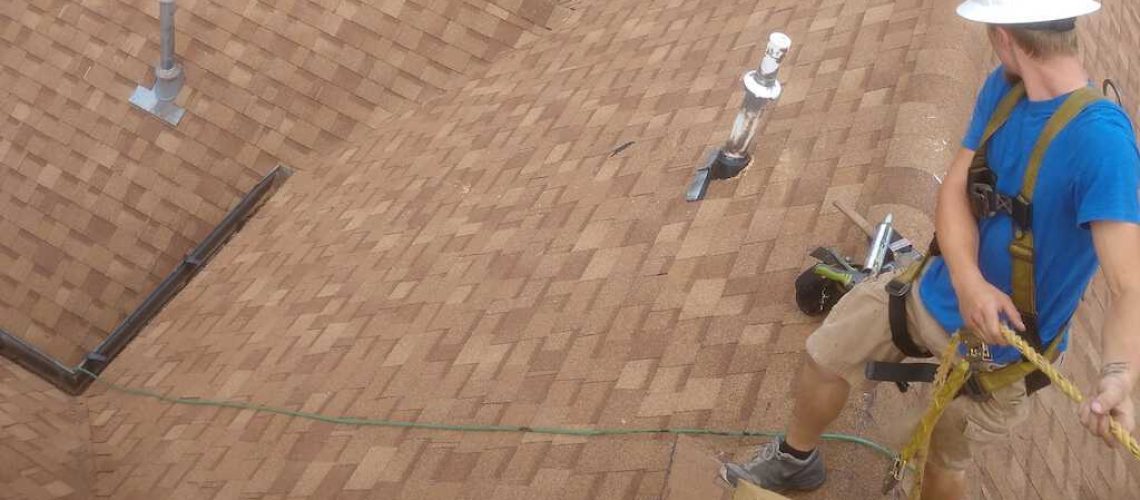Did you know that the average roof lasts between 20 and 25 years? Whether you need to replace your roof or want a brand new roof for your home, there are a few things you might want to know about the roof installation process. For one, where do you start?
Even if you don’t plan on installing a roof yourself, it’s always a good idea to know more about how the professionals do it. Interestingly enough, the roof installation timeline doesn’t begin with the laying down of roof shingles but with the evaluation of the roof.
The Roof Evaluation
Whether you’re asking, “How long does it take to install a new roof?” or “How to install a new roof?” evaluating your roof will answer many of these questions for you. Depending on what kind of roof situation you’re dealing with, you may need to remove your old roof before you can evaluate anything.
One of the worst things you can do is build a new roof over the old roof. Some roofing contractors will do this to save time and energy, but this is a terrible idea. This is because all these layers of roofing put extra weight on the roof and the house as a whole.
These extra layers may lead to early failure of your roof in the future. If you need to remove your old roof, removing it will show you the inner structure of the roof and how it’s put together. You should keep in mind that while you remove the old roof, you shouldn’t remove the sheathing.
The sheathing is what you need to inspect before you put any new shingles on your home. You will be able to identify the sheathing without any trouble because it is a lot of flat panels put together for structural support. Without the sheathing, you wouldn’t be able to lay down your roof.
More than that, the shingles of your choice would have a very hard time attaching without a good sheathing. For this reason, evaluating the sheathing for wet spots or damage is important. If you find spots of damage, even small spots, don’t ignore them.
Get them fixed as soon as you can. If you ignore damage to the sheathing, the damage will only get worse once you put the new roof on. Eventually, the damaged sheathing will end up damaging the new roof.
Installing the Roof Underlayment
When it comes to the process of installing a new roof, installing the roof underlayment is one of the most important parts. But before you do this, you should remember to take care of some other roof details. For example, if you live in a cold area, installing a water or ice barrier on your roof can benefit you in the long run.
Installing a drip edge is also important, although it is not always necessary. The drip edge is particularly important for preventing water from slipping into your roof and causing damage. It goes over the water and ice barrier if you installed it.
The drip edge actually goes on in two parts. You install the first part before the roof underlayment and then the second part after the underlayment. The underlayment itself will also give your home’s roof plenty of protection.
There are two different types of underlayment you should know about and some are better than others. For example, 15# underlayment is thinner compared to the 30# underlayment. Underlayment also comes in different materials such as specialized paper or synthetic materials.
Many people tend to choose synthetic underlayment for their roofs because they tend to be more durable. If you are trying new roof installation by yourself, you will find that installing the roof underlayment isn’t too difficult of a task. Underlayment comes in a big roll that you can roll out over the foundation of your roof.
Every four inches, you should nail down the underlayment so that it remains secure. Many forms of underlayment also come with a sticky side so that they are more securely applied to the roof foundation. Once you finish with the roof underlayment, you will be able to start putting on the roof itself.
Installing the Roof Itself
The process of installing the actual roof will depend on what kind of roof you plan on having installed. Since this step of the process can be quite dangerous, it is recommended that you hire a professional roofer for the job.
If you really want to try installing your own roof, you should know that asphalt shingles are some of the easiest roofing materials to install. First, you need to think about how many shingles you need to cover your entire roof. Overestimating the number is a waste of money and underestimating the number will waste time.
Once you have your shingles, lay them down along the edge of the roof and nail them down with a nail gun. You should use roofing nails rather than any other nails since they are specialized to endure the elements of the outdoors. The first shingles you put down should hang over the drip edge.
Then, for all the other shingles, make sure they overlap each other slightly. Applying roofing tar between the crevices of the shingles will also help to keep any water from seeping inside the roof.
Everything You Need to Know About the Roof Installation Process
If you were unsure what to expect from the roof installation process, you now know all about how it works. From evaluating the sheathing to tacking on asphalt shingles, installing a roof can be a long but rewarding process.
To learn more about roof installation, get an estimate here.




